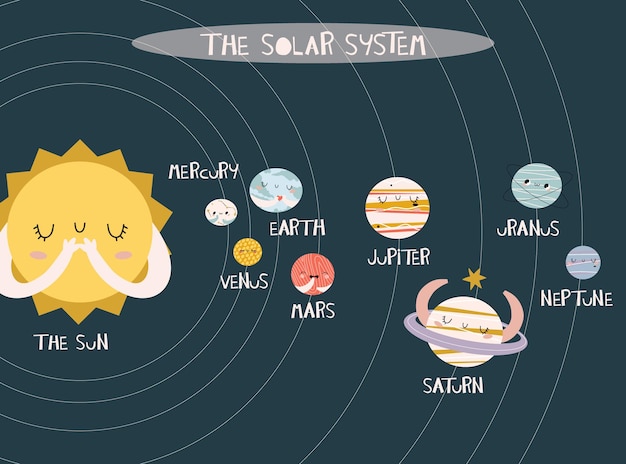Fascinating Facts about the Moon for Kids

The moon is Earth’s only natural satellite.
The moon is about 4.5 billion years old.
The moon is about 1/6th the size of Earth.
The moon has a diameter of approximately 3,474 kilometers.
The moon’s gravity is about 1/6th that of Earth’s gravity.
The moon takes about 27.3 days to fully orbit around Earth.
The moon doesn’t have an atmosphere, which means there is no weather on the moon.
The moon has many craters on its surface caused by asteroid impacts.
The temperature on the moon can range from extremely hot to extremely cold.
The moon’s surface is covered with a layer of dust called regolith.
The moon has no liquid water, but scientists have found ice in some shadowy craters.
The moon is tidally locked with Earth, meaning we always see the same side of the moon.
The dark areas on the moon are called maria, and they were created by ancient volcanic activity.
The moon has a very weak magnetic field.
The moon’s surface is mainly made up of rocks and dust.
The moon is slowly moving away from Earth at a rate of about 3.8 centimeters per year.
The moon’s gravity has an effect on Earth’s tides.
The moon has been visited by astronauts during the Apollo missions.
The first human to walk on the moon was Neil Armstrong in 1969.
The moon has no plants or animals living on it.
The moon is a popular subject for poets and writers throughout history.
Fascinating Facts about the Moon for Kids part 2
The moon’s brightness is caused by the reflection of sunlight off its surface.
There are phases of the moon, which change throughout the lunar cycle.
The moon has inspired many myths and legends across different cultures.
The moon’s gravity helps stabilize Earth’s tilt, which affects our seasons.
The moon has a very thin and weak atmosphere called an exosphere.
The moon’s gravity makes it difficult for objects to escape its gravitational pull.
The moon’s surface has been explored by robotic spacecraft.
The moon has no sound, as there is no air or atmosphere to carry sound waves.
The Apollo 11 mission was the first time humans landed and walked on the moon.
The moon’s surface temperature can vary from -173 degrees Celsius to 127 degrees Celsius.
The moon’s craters are named after famous scientists, explorers, and artists.
The moon’s gravity affects the Earth’s axial tilt, contributing to long-term climate variations.
The moon’s gravity has been used to assist spacecraft on their journeys to other planets.
The moon’s surface is covered in a layer of fine dust called lunar soil.
The moon has a month-long day and night cycle.
The moon has different phases, including new moon, waxing crescent, first quarter, waxing gibbous, full moon, waning gibbous, and last quarter.
The moon’s gravity is the reason why we can’t jump as high as we can on Earth.
The moon is responsible for causing solar and lunar eclipses.
The moon is not a light source; it shines because it reflects sunlight.
The moon’s craters vary in size, from small ones meters wide to large ones dozens of kilometers wide.
The moon’s gravity affects the behavior of spacecraft in orbit around it.
The moon has been photographed and studied extensively by telescopes on Earth.
The moon has inspired countless works of art, including paintings, music, and films.
The moon has a relationship with Earth that is both mysterious and beautiful.